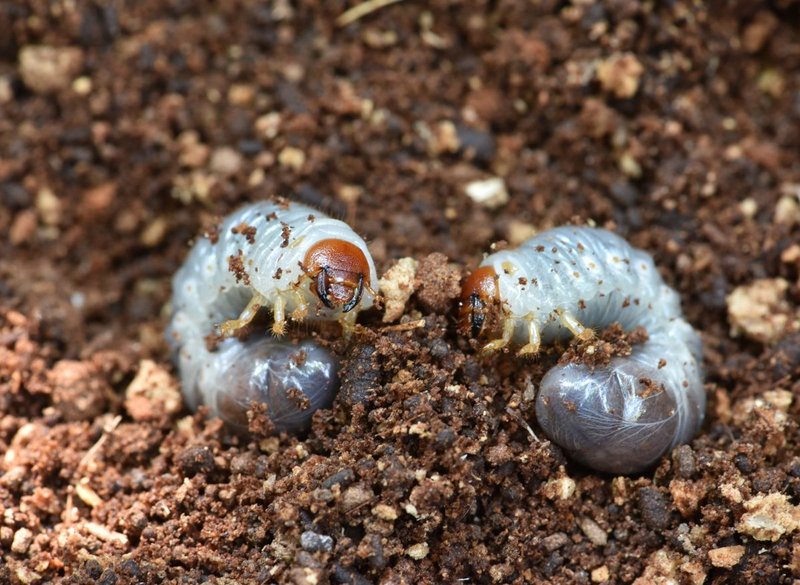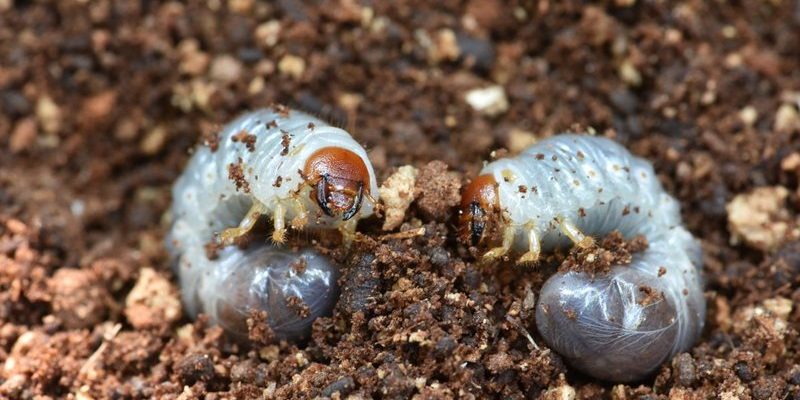
Imagine your potted plant as a person who’s just trying to live their best life. They need sunlight, water, and nutrients—lots of it! Now, picture a grub worm as an unwelcome houseguest, sneaking in and taking all the essential food away from your plant. The plant gets weaker, and before you know it, it’s struggling to survive. Let’s dive into how these little pests work, what they do to your beloved plants, and how to deal with them effectively.
What Are Grub Worms?
Grub worms, often referred to as “grubs,” are the larvae of various beetles, especially the Japanese beetle. They often dwell in the soil, feasting on the roots of plants, and you might notice them when you dig into the dirt. Typically, they’re pale, C-shaped creatures that can grow up to an inch long.
You might be wondering why they’re such a problem. As they munch on plant roots, they hinder the plant’s ability to absorb water and nutrients. Without a strong root system, the plant can struggle to thrive. Think of it like trying to run a race with weights tied to your legs—it’s tough, and you might even fall behind!
Signs That Grub Worms Are Present
So, how do you know if your potted outdoor plants are being targeted by these pesky grubs? There are a few signs to look out for:
- Wilting Leaves: If your plant’s leaves look droopy or are turning yellow, that could indicate trouble at the roots.
- Brown Patches: Sometimes, parts of the soil may dry out or appear brown, suggesting that roots are damaged.
- Root Disturbances: If you pull up a plant and notice few roots or even no roots at all, grubs may be the culprit.
- Visible Grubs: Of course, if you dig around and see those little white grubs, you’ve found the source!
Keep an eye on your plants. Early detection can make a huge difference in how well you can protect them.
How Grub Worms Damage Potted Plants
Grub worms primarily feed on plant roots, which can lead to several problems for your potted plants. When roots are eaten away, the plant struggles to get the water and nutrients needed to thrive.
Here’s the thing: if you think of your plant’s roots as a network of highways, grubs are like roadblocks. When they chew through the roots, they’re effectively disrupting the entire transportation system, making it hard for the plant to operate normally. This can eventually lead to the plant wilting and even dying if left unchecked.
In addition, as grubs consume plant roots, they can attract other pests or diseases that take advantage of the weakened plant. It’s a domino effect, where one problem leads to another, often resulting in a complete downfall of your beloved plant.
Preventing Grub Worm Infestations
Preventing grub worms is much easier than dealing with an infestation. Here are some practical tips to safeguard your potted plants:
- Maintain Healthy Soil: Healthy soil can support strong plant roots. Use well-draining potting soil and high-quality compost.
- Rotate Plants: Changing the location of your plants can disrupt the life cycle of any grubs lurking in the soil.
- Introduce Beneficial Insects: Ladybugs and certain nematodes naturally prey on grubs and can help keep their populations in check.
- Use Natural Insecticides: There are several organic solutions available that specifically target grubs without harming your plants.
Taking these steps can be like building a fortress around your plants, allowing them to flourish without the threat of grub worms.
Treating Grub Worm Infestations
If you find that your potted plants have already fallen victim to grub worms, don’t panic! There are ways to treat the issue and help your plants bounce back.
First, carefully unpot the affected plant. Inspect the roots and, if you see any grubs, hand-pick them out. You can also cut away any severely damaged roots, which can help promote new growth.
Next, consider using a natural insecticide. Products with neem oil or beneficial nematodes can help control grub populations in your pots. If you prefer chemical solutions, look for targeted insecticides but remember to follow the instructions carefully, as you don’t want to harm your plants or the surrounding environment.
Once the grubs are dealt with, repot your plant in fresh, clean soil. This fresh start can help invigorate your plant and promote healthy growth once again.
Aftercare for Affected Plants
After treating your potted plants for grubs, it’s crucial to provide extra care to ensure they recover well. Here’s how to give your plants the best chance at survival:
- Water Wisely: Ensure your plant is appropriately watered, but avoid overwatering, which can lead to root rot.
- Fertilize Lightly: A gentle application of balanced fertilizer can supply necessary nutrients. Just be cautious—too much can do more harm than good.
- Monitor Regularly: Keep checking your plants for signs of re-infestation or other problems. Early detection is key!
Give your plants some time to adjust and recover. With the right care, they can regain their strength and beauty.
Final Thoughts
Grub worms may be small, but they can have a significant impact on your potted outdoor plants. By understanding how these pests operate, spotting the signs of damage, and taking preventative measures, you can help protect your green companions.
Remember, it’s all about creating a healthy environment for your plants to thrive. Whether you’re nurturing a vibrant flower pot or a sturdy herb garden, keeping a watchful eye can make all the difference. With a little effort and attention, you’ll be on your way to enjoying lush, healthy plants that bring joy to your space—without those pesky grubs in the mix!

